Focusrite Rednet R1 Dante interface with preamp / headphones Dante plus PoE
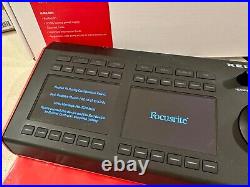
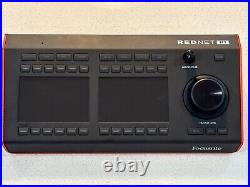
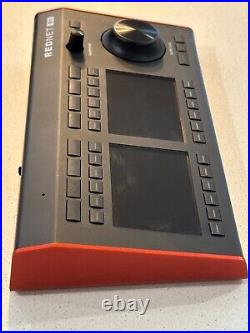
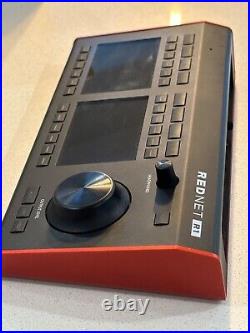
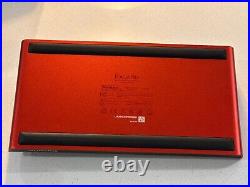
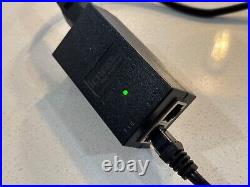
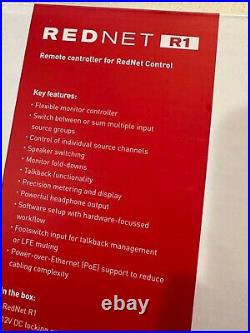
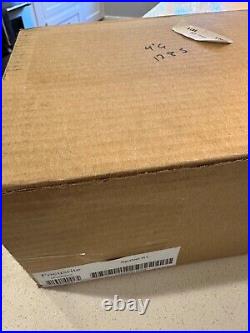
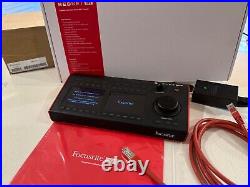

Focusrite Rednet R1 - Dante interface with preamp / headphones Dante plus PoE. This is a phenomenal controller for the Red series of interfaces 8Pre, 16Line, etc. I switched to PoE when the original adapter died, so it is not included. I used it with an 8Pre to run a 7.1.4 Atmos mixing rig. The dual meter displays show you levels for all up-to-12 channels of the selected incoming source and the outputs.
Combined with the Rednet Control software, you can do all sorts of routing, down mixing, remapping, etc. If you are in the Focusrite ecosystem, I highly recommend watching some YouTube videos to see what it can do.
Note: It is -not- really plug-and-play. You may need to do some network configuration to get the Dante traffic working between the audio interface and the R1, and may need to learn a bit about Dante Controller software. Once configured, though, it's great.RedNet R1 enables users to interact with their audio system like never before. It provides the flexibility to control a range of different monitor output setups, ranging from mono through to 7.1.2 surround, including Dolby Atmos® and other immersive audio workflows. Alternatively, completely custom setups of up to 12 outputs can be configured for bespoke speaker configurations.
RedNet R1 supports a maximum of eight input sources from 32 available audio channels, across analogue, digital, DAW and Dante connections, and mixes and routes signals to up to 12 monitor output channels. Top-panel control includes level, reference level preset selection, cut, dim, mute and a variety of solo modes. There's an A/B switch for switching between numerous monitoring presets, and up to four fold-down presets allow fast switching for checking downmixes. Custom cue mixes can be sent to talent from any of the 32 available inputs. RedNet R1 also features a Dante-enabled talkback section, internal mic-pre and a high-powered headphones output, so you can interact with your Dante system like never before.
Up to four talkback destination groups are available when used with a Red interface. When used with other Dante devices, a single talkback group is available. RedNet R1 has an internal microphone, or users can connect their own microphone via the rear-panel XLR. The high-fidelity headphone output is powerful enough to deliver high-SPL audio to high-impedance headphones. RedNet R1 features two LCD displays for highly accurate level metering of the outputs, sources and headphone outputs, and for giving visual cues for navigating around menus.
The unit is configured using RedNet Control 2, the software manager designed primarily for ease of use in quickly setting up both simple and complex monitoring and routing configurations. Other features of the RedNet R1 include a quarter-inch jack socket, which accepts a footswitch for talkback management, LFE muting and more. It can be powered via Ethernet to reduce cabling complexity (using the PoE standard), or by a DC power supply. Switch and sumSupports a maximum of eight channels, each of up to 12 sources per channel, from 32 available audio sources.Flexible monitor control Controls include level, reference level, preset selection, cut, dim, mute, A/B switch, and a variety of solo modes. Monitor fold-downs Up to four fold-down presets allow fast switching for checking downmixes.
Talkback & headphones functionality Four destination groups when used with a Red interface, or a single talkback group when used with other Dante devices. High-fidelity output can take its source from a multitude of sources. Built-in Microphone RedNet R1 has an internal talkback microphone, or users can connect their own, via the rear-panel XLR. Precision metering and display Two LCD displays for highly accurate level metering of the outputs, sources and headphone outputs, and for giving visual cues for navigating around menus. Software setup with hardware-focussed workflow RedNet Control is designed for quickly setting up simple or complex configurations. Footswitch input Quarter-inch jack socket accepts a footswitch, for talkback management, LFE muting and more. Power-over-Ethernet (PoE) support Powered via Ethernet (using the PoE standard), or using a DC power supply.